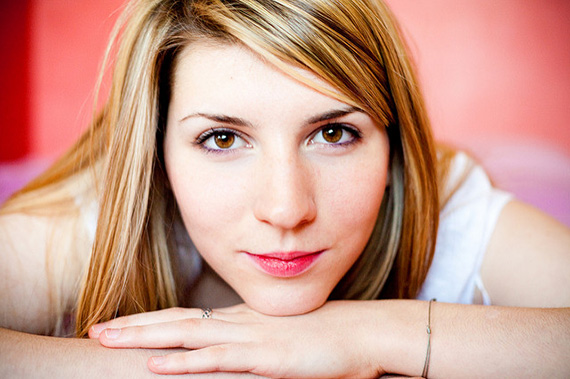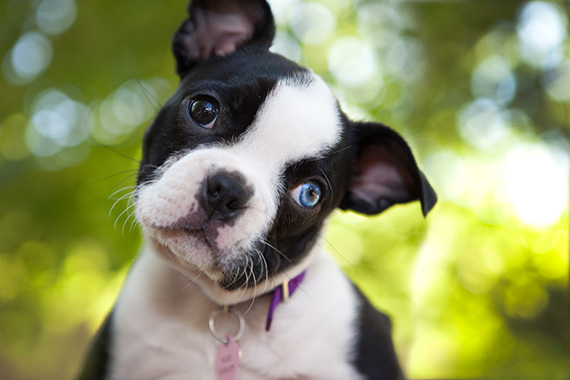Today’s photo tip is about spooky, creepy looking eyes. We all know about the red eye effect ruining our photos, but have you ever seen the green or blue eye effect? This cousin of the red eye effect is often seen in pet portraits. In animals, green and blue eyes are the same thing as red eye in humans.
Most of you already know what causes it, but for those who don’t, the red eye effect is the result of your flash being too close to the lens. When the light source is close to the lens, like with an on camera flash, when the flash is fired, the light goes from the flash into the pupil of the subject’s eye and straight back out into the camera’s lens.

photo by Angel James de Ocampo
Light bounces the same way a billiards ball does. It reflects out at the same angle it went in. If it hits the subject at a steep angle like 45 degrees, it will bounce off at 45 degrees.
In other words, light hitting a model from one side, will exit to the other side. With the on camera flash, the light hits the model with little to no angle at all. So it comes straight back and into the lens.
Red eye is caused when the light from the flash goes into the eye and reflects off the back of the eyeball. The red you are seeing is the red of the blood vessels and inside surface of the eye.
Green and blue eye is the same thing–only in animals. When you’re shooting dogs and cats, you will frequently run into the problem.
How do you fix it?
Change the angle of the light so it doesn’t bounce off the back of the eye, straight back into the lens! Move the flash off the camera and away from the lens–tilt the flash so it bounces off the wall or ceiling and onto the subject or get rid of the flash altogether and use another light source.
That’s why you frequently see photographers with their flash unit mounted on one of those big stalks off to the side of the camera. They are just eliminating a few problems caused by flash–one of which is red eye.
One fix that I do NOT recommend is using the red eye setting on your camera. What that does is fire off a bunch of pulses of light prior to firing the main flash and exposing the photo. The idea behind that is it will cause the pupil in the subject’s eye to constrict–becoming smaller–so the light can’t get in and back out. It doesn’t work–and worse, it makes the subject squint! If you’re shooting an animal, it will freak them out and you can forget about getting any good shots! You’ll be doing good if you even find the animal after it takes off.
I hope this photo tip helps you understand how to eliminate red, green, and blue-eye effect. Both your human and pet portraits will benefit.
About the Author
Dan Eitreim writes for OnTargetPhotoTraining. He has been a professional photographer in Southern California for over 20 years. His philosophy is that learning photography is easy if you know a few tried and true strategies.
Like This Article?
Don't Miss The Next One!
Join over 100,000 photographers of all experience levels who receive our free photography tips and articles to stay current:







Leave a Reply